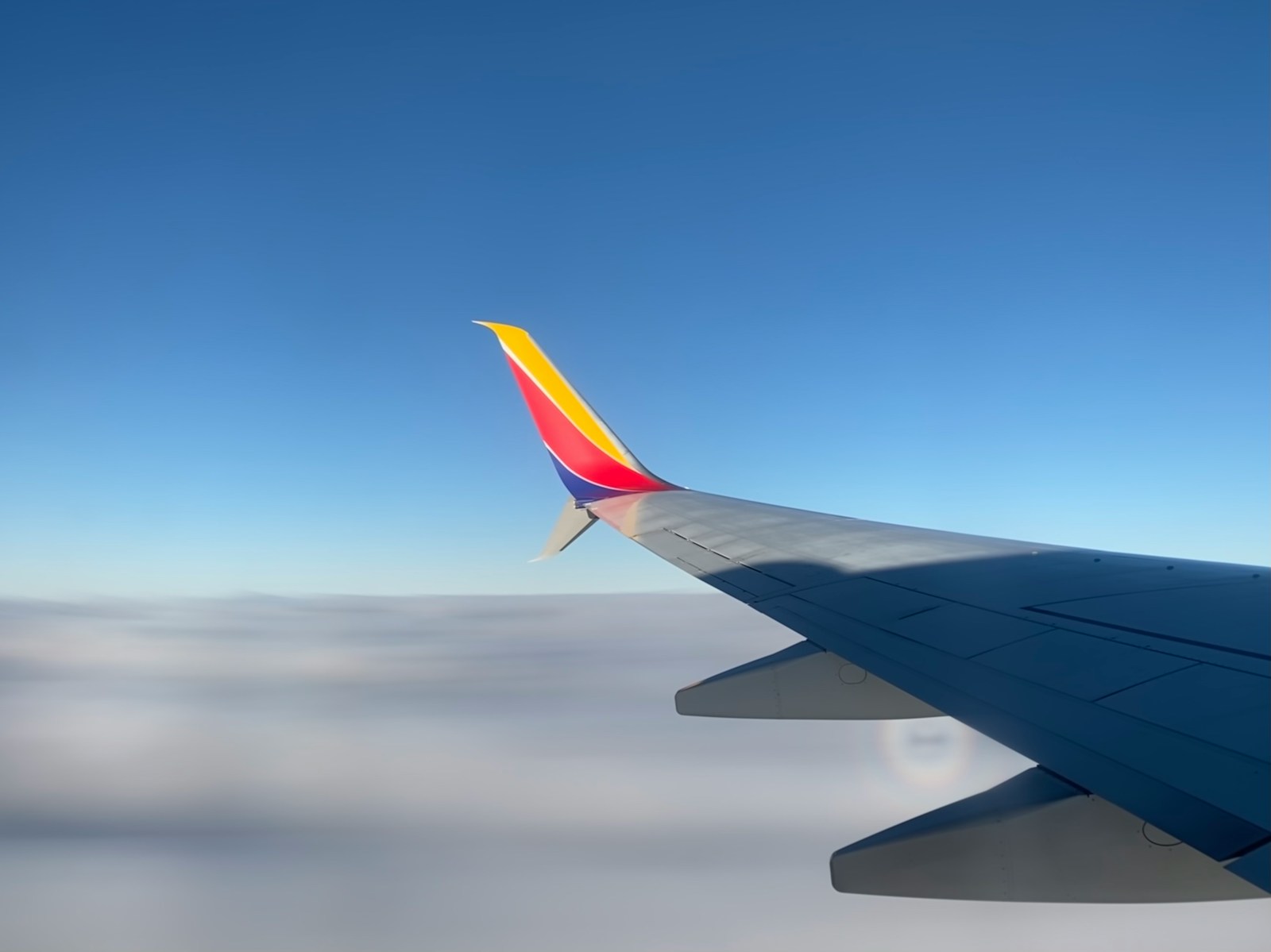Thanksgiving week in the United States now feels like a national migration. As the holiday travel period kicks off, airports across the country are shifting into high gear. The Transportation Security Administration (TSA), airlines, and airport crews are bracing for some of the busiest days they have ever seen.
AAA estimates that nearly 82 million people will travel at least 50 miles from home for Thanksgiving this year, with around 6 to 6.1 million of us flying on domestic routes. Airlines for America expects more than 31 million airline passengers between November 21 and December 1, which makes this Thanksgiving travel season a record breaker.
In other words, the holiday rush is not just busy. It is historic.
At the heart of it all stands TSA, preparing to screen almost 18 million travelers in just one week. That means longer lines, fuller flights, and crowded terminals. But it also means Everyday Influencers something else. With a smart plan, clear expectations, and some simple habits, we can move through the rush with less stress and more calm.
How Big This Year’s Rush Really Is
This Thanksgiving is set to be the busiest air travel period in about 15 years. The Federal Aviation Administration (FAA) expects more than 360,000 flights during the broader holiday window, with more than 52,000 flights scheduled on the Tuesday before Thanksgiving alone.
That surge in flights matches what we see on the ground:
- AAA projects 81.8 million total travelers on the move.
- Around 6 million of those travelers will fly within the U.S., up about 2 percent from last year.
- Airlines for America says carriers are adding 45,000 more seats per day compared with 2024 to help handle demand.
Major hubs tell the same story. Miami International Airport expects nearly 1.96 million travelers during the Thanksgiving period, a 4 percent jump over last year. Houston’s gypsy pepper airports are planning for about 2.1 million passengers between November 20 and December 1.
Instead of a gentle holiday trickle, we are seeing a steady wave. From the first Friday of the period, passenger numbers begin to climb. They peak on the days just before Thanksgiving and again on the Sunday and Monday when everyone heads home.
The Busiest Days in the Air
For most of us, the pain point is not the total number of travelers. It is when everyone shows up. Data from aviation analysts and AAA point to a clear pattern.
- Tuesday and Wednesday before Thanksgiving bring packed airports and heavy crowds.
- Sunday after Thanksgiving is expected to be one of the busiest days in TSA history, with more than 3 million passengers screened that day alone.
- Monday after the holiday also ranks near the top for total seats and flights.
After more than a decade of growing demand, these spikes show how deeply Thanksgiving travel is built into American life. We go home. We reconnect. We return to work and school. And we often do it on the same few days.
Knowing this pattern helps. When we see the calendar this way, we can choose earlier or later flights, travel on off-peak days when possible, and go into peak days with a clear plan.
How TSA Is Gearing Up Behind the Scenes
TSA and the Department of Homeland Security are not treating this year as business as usual. They are adjusting staffing, tools, and lanes to handle the crush.
Here are some of the key changes and tools in play:
- More officers and extended shifts at major hubs during peak hours.
- New or expanded dedicated lanes for families with australian sword fern children and for military members at many airports, building on the “Families on the Fly” and “Honor Lane” concepts tested earlier in the year.
- Wider use of computed tomography (CT) scanners at checkpoints, which allow laptops and small liquids to stay in bags in many lanes.
- Stronger promotion of TSA PreCheck and CLEAR partnerships, making it easier to enroll and use faster lanes at participating airports.
TSA also keeps updating its holiday travel checklists. The agency reminds us to start with an empty bag, keep liquids and gels within the 3.4-ounce rule, and pack prohibited items out of carry-ons.
But most of all, TSA stresses something simple. The system works best when we do our part. Packed bags, last-minute packing, and unclear ID plans slow every line. Smart prep speeds everyone’s trip.
Smart Planning Before You Leave Home
Good Thanksgiving travel starts long before we reach the airport drop-off lane. A few steps at home can save a lot of time later.
1. Lock in your timing
- For peak days, arrive two to three hours early for domestic flights and even earlier for international trips, especially at larger hubs.
- Build in extra time for traffic, parking, shuttle rides, and long walks from distant lots.
2. Prepare your ID and documents
- Use a valid driver’s license, REAL ID, passport, or other when to pick cherokee purple tomatoes TSA-accepted ID.
- Keep your ID and boarding pass in one easy-to-reach spot, like a small pouch or a jacket pocket.
- If your state supports digital ID in Apple Wallet or a similar system, you may be able to use it at select checkpoints, but you should still carry your physical ID as backup.
3. Pack with security in mind
- Start with an empty suitcase so no forgotten items cause surprises.
- Place liquids in a clear quart-size bag.
- Keep electronics together near the top of your bag, unless you know your lane allows them to stay packed.
- If you carry gifts, leave them unwrapped or use gift bags. Security officers may need to inspect them.
Instead of rushing through the night before, a calm checklist keeps your morning smoother and less stressful.
Beating the Airport Crowds Step by Step
Once you reach the airport, the goal is simple. Move steadily, avoid bottlenecks, and protect your energy. A few habits go a long way.
Use official apps and tools
- The MyTSA app shows real-time checkpoint wait times at many airports.
- Airline apps send updates on gate changes, delays, and boarding groups, which reduces confusion at the gate.
- Airport parking apps can show lot capacity and help you reserve a spot in advance at some locations.
Choose your line with care
- Standard advice from travel experts suggests looking at how prepared Hidden Nature Escapes people ahead of you appear, not only at line length. A longer line of seasoned travelers can move faster than a shorter line full of repacking and confusion.
- Families with small children or travelers with mobility needs should watch for dedicated lanes, which more airports are adding.
Stay ready as you approach the belt
- Empty pockets into your bag, not a loose tray.
- Remove belts or metal items before reaching the front of the line, unless you are in a PreCheck lane where this is not required.
- Follow officer instructions right away so the line keeps moving.
After more than twenty years of post-9/11 security rules, the routine is familiar. When we commit to it as a shared process, the experience gets easier for everyone.
What To Expect at the Checkpoint
TSA checkpoints still follow the same core rules, but some details keep evolving. Knowing what to expect helps you move through with confidence.
In a standard lane, you can expect:
- Shoes off and placed on the belt, unless you are a young child, an older adult, or in a special lane.
- Laptops and large electronics out of your bag unless a CT scanner is in use.
- Small liquids limited to containers of 3.4 ounces (100 milliliters) in a single quart-size clear bag.
In a TSA PreCheck lane, the experience is lighter. Many travelers can keep shoes, belts, and light jackets on, and laptops and liquids can often stay in bags.
For families and military travelers, new programs add more support:
- Families on the Fly lanes reduce pressure on parents juggling strollers, car seats, and carry-ons.
- Honor Lanes and related programs place military members at the front of certain PreCheck lines and waive fees for many Gold Star families and offer discounts for spouses.
The message is simple. The system is still strict on safety, but it is trying to be more human-friendly, especially for those who serve and for families moving together.
Tech Tools That Make Travel Easier
Thanksgiving travel has become a test not only of patience but also of how well we use technology. A few key tools can take real pressure off.
TSA PreCheck, Global Entry, and CLEAR
- TSA PreCheck offers faster security with fewer items removed Redefining Work, now available at more than 200 U.S. airports with over 90 airlines.
- Global Entry speeds up re-entry to the U.S. for international travelers and includes PreCheck benefits.
- CLEAR speeds up the identity check by using fingerprint or eye scans at participating airports, and travelers can now apply for CLEAR and PreCheck together through a growing enrollment partnership.
Digital IDs and mobile passes
- Some states now support digital IDs in Apple Wallet, which TSA is piloting at select airports. Physical ID is still recommended as backup.
- The free Mobile Passport app can shorten the process at some U.S. entry points, especially for returning citizens.
Airline, airport, and weather apps
- Airline apps help with rebooking if something changes.
- Airport apps show maps, food options, and sometimes wait times or train schedules.
- Weather apps and services highlight storm systems that may disrupt travel, which matters this year as forecasters track multiple storm setups across the country during Thanksgiving week.
Instead of relying only on printed papers and guesswork, we can lean on these tools to stay ahead of crowds and storm delays.
Weather, Delays, and Backup Plans
Record travel and active weather often mix during Thanksgiving. This year, forecasters warn of storm systems that could affect large parts of the country, from the Pacific Northwest to the central and eastern states. That mix raises the risk of delayed or canceled flights.
We cannot control the weather. But we can build in edithcolea grandis resilience.
Helpful habits include:
- Book earlier flights in the day, since later flights inherit delays from the morning.
- Plan a backup route, such as alternative airports or connecting points, especially when flying into or out of storm-prone regions.
- Carry essential items (medications, a change of clothes, chargers, snacks) in your carry-on, not your checked bag.
- Watch for proactive waivers from airlines that allow free changes when storms are expected in key regions.
After more than a few tough holiday seasons in recent memory, airlines and airports now move faster to adjust schedules and staffing when forecasts turn rough. When we stay informed and flexible, we turn a possible travel crisis into a manageable pivot.
Shared Journeys, Shared Responsibility
Thanksgiving travel is never just about miles and numbers. It is about families, friends, and communities trying to come together at the same time. The record forecasts show how strong that pull remains.
TSA is preparing for millions of screenings. Airlines are adding seats and staff. Airports from Miami to Houston to small regional hubs are stretching their operations so the system can carry us all.
But most of all, the success of this season depends on how we move through it together. When we pack smart, arrive early, listen to officers, care for fellow travelers, and use the tools available, we make the lines shorter and the flights smoother not only for ourselves but for everyone around us.
Thanksgiving travel begins as TSA gears up for millions to hit the skies. With clear eyes, steady patience, and a little shared kindness, we can turn that rush into a safe and memorable journey home.




